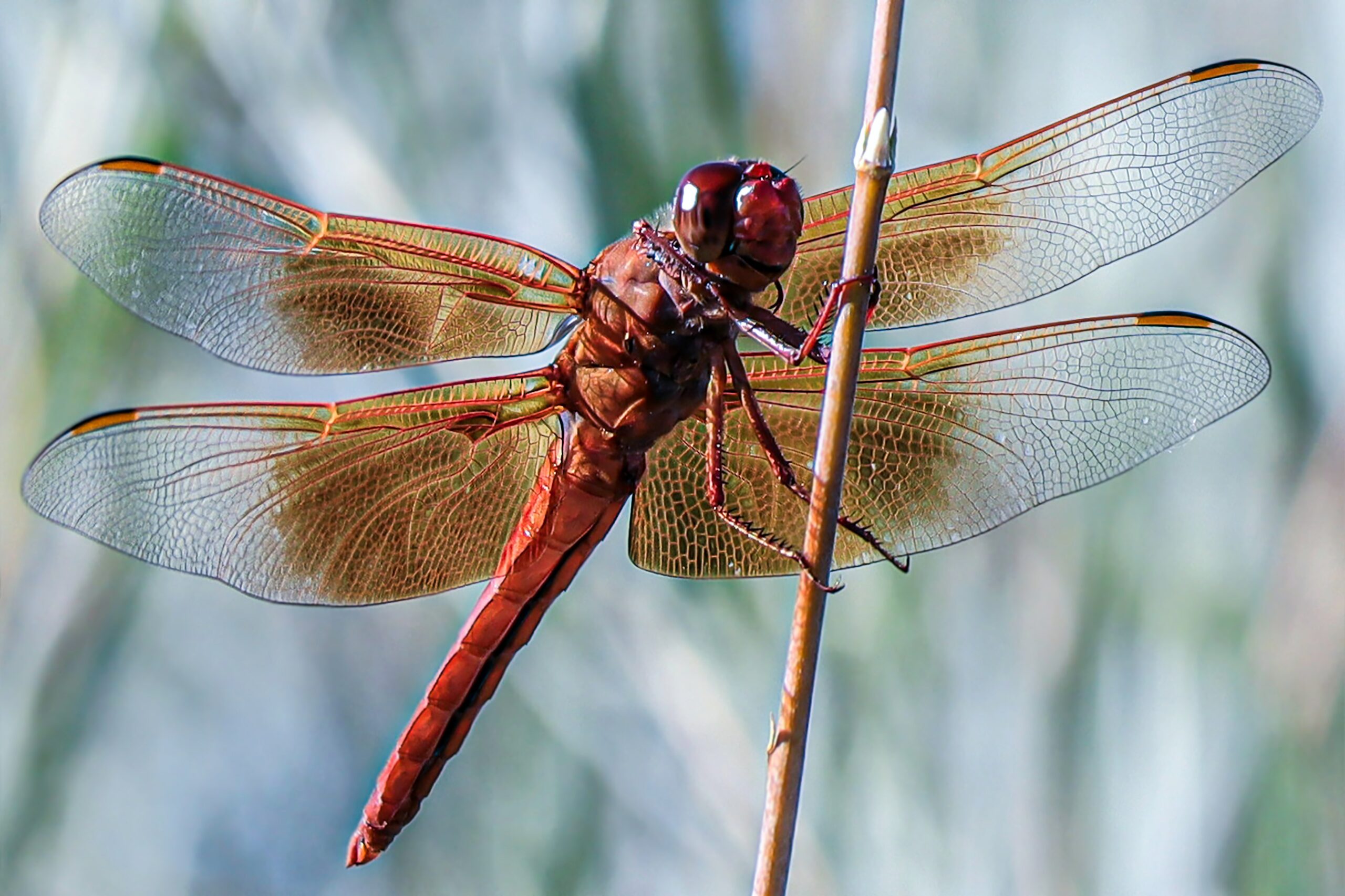Dragonflies are fascinating creatures that belong to the animal kingdom, class Insecta, and order Odonata. These darting to and fro insects have captured humankind’s attention with their shimmering wings and swift flight.
Dragonflies tend to be located around bodies of water like ponds or lakes. Let’s flutter about with them and learn more about the enchanting world of dragonflies, exploring their various species, unique characteristics, and intriguing behaviors.
Types of Dragonflies
With a staggering diversity, there are approximately 5,000 known species of dragonflies inhabiting our planet. Each species showcases its own distinctive features, making them a remarkable sight in nature. Here are a few popular dragonfly species:
- Common Green Darner: The Common Green Darner (Anax junius) is a widespread species found throughout North America. With its striking green coloration and transparent wings, it is a highly recognizable dragonfly. Known for its migratory behavior, it travels long distances, making it an impressive sight during its annual journeys.
- Eastern Amberwing: The Eastern Amberwing (Perithemis tenera) is a small dragonfly species with vibrant orange and brown wings. Found in the eastern United States, it is often seen around ponds and marshes. Despite its diminutive size, it is known for its fierce hunting abilities.
- Blue Dasher: The Blue Dasher (Pachydiplax longipennis) is a widespread species in North America. As the name suggests, it displays a captivating blue coloration. This dragonfly is a swift flier and is often observed perched on grasses or other plants, hunting for small insects.
What are dragonflies known for, and what makes them unique?
Dragonflies are renowned for their exceptional flying skills and incredible agility. They can hover in mid-air, fly in any direction, and change course rapidly, all while reaching impressive speeds. Their large compound eyes provide excellent vision, enabling them to track their prey and navigate through complex environments.
Another unique aspect of dragonflies is their remarkable life cycle. They undergo incomplete metamorphosis, with three distinct stages: egg, nymph, and adult. The aquatic nymphs spend most of their lives in water, where they hunt and grow. Once fully developed, they emerge from the water as adults, shedding their nymphal skin and revealing their dazzling wings.
Summary
Dragonflies truly embody the marvels of the natural world. With their stunning colors, intricate flight patterns, and predatory skills, they capture our imagination and leave us in awe. From the gigantic Giant Petaltail to the minuscule Scarlet Dwarf, dragonflies showcase a remarkable diversity of species.
Their unique characteristics, such as their hunting prowess and migratory behaviors, further contribute to their allure. As we observe these enchanting creatures, we continue to deepen our understanding of the intricate web of life that surrounds us.






























































